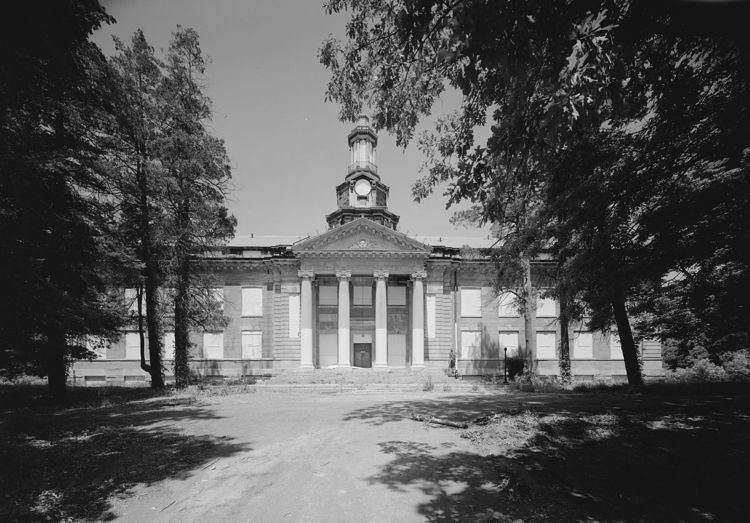Area 30 acres (12 ha) Architect Boring & Tilton Phone +1 410-287-2050 | Built 1900 (1900) NRHP Reference # 84001760 | |
 | ||
Architectural style Colonial Revival, Georgian Revival Similar Cecil County Public Sc, North East High School, Cecil College, Havre De Grace High School, Tri‑State Christian Academy | ||
Abandoned historic tome school escape by eightgames walkthrough
The Tome School is a private school in North East in Cecil County in the U.S. state of Maryland. It is one of the oldest schools in Maryland. It enrolls grades K - 12.
Contents
- Abandoned historic tome school escape by eightgames walkthrough
- Mema psa video competition the tome school 6b
- Port Deposit
- USNTC Bainbridge
- Academics
- Extracurricular activities
- Notable alumni
- References
Mema psa video competition the tome school 6b
Port Deposit
The Tome School for Boys, originally located on Main Street in Port Deposit, Maryland, was founded by Jacob Tome as a nonsectarian college preparatory school for boys. It opened for boarders and received its first students in 1894. It was part of a system of schools collectively known as the Jacob Tome Institute that began with kindergarten and extended through high school. The school was immediately popular, attracting almost all the students from the town of Port Deposit and many from outside.
Tome left the school an endowment at his death in 1898. Under the direction of his widow, Evalyn N. Tome, the Board of Trustees hired James Cameron Mackenzie to direct the school. MacKenzie, one of the most important late 19th-century secondary school educators, proposed using the endowment to create a separate upper-level boarding school for boys. Two hundred acres on the bluff above the town were purchased for this purpose. MacKenzie in turn consulted with Robert Peabody, of the prominent Boston architectural firm of Peabody & Stearns, concerning the design of the new Jacob Tome Institute.
Following a design competition in 1900, supervised by Peabody, the Board of Trustees selected designs by architects William Boring and Edward Lippincott Tilton in the beaux arts style. Over the next five years, granite buildings were built on the bluffs above Port Deposit, overlooking the Susquehanna River. The tree-lined streets of the campus were designed by Frederick Law Olmsted and converged at the steps of Memorial Hall. Olmsted selected landscape architect Charles Wellford Leavitt to design the school's gardens. By 1902, the school had more than a dozen buildings and an endowment of $2 million ($55,361,538 today). Thirteen of these buildings survive: Memorial Hall, three dormitories (Jackson, Madison, and Harrison), the Chesapeake Inn dormitory and dining hall, the Director's residence, the Monroe Gymnasium, and six Master's cottages.
In the early 1900s, Tome played football annually against Baltimore City College high school. The rivalry was fairly even. The City Collegians beat Tome 5-0 in 1903 and 11-8 in 1904, but Tome won 32-0 in 1912 and 37-0 in 1915.
In 1906, school director Abram W. Harris, along with Phi Beta Kappa members on the Tome School faculty, organized Alpha Delta Tau fraternity, which later became the Cum Laude Society.
The school enjoyed a prestigious reputation for a number of years. Its students included R. J. Reynolds, Jr. (son of R. J. Reynolds) as well as children of the Mellon and Carnegie families.
The school property and buildings were listed on the National Register of Historic Places as a historic district in 1984.
USNTC Bainbridge
After thriving for several decades, the Jacob Tome Institute fell into difficult financial straits during the depression and was finally closed in 1941. The following year the property, along with the land from 70 surrounding farms, was acquired by condemnation for development as a U.S. Naval Training Center. The institute's former buildings were converted to use by the Naval Academy Preparatory School. USNTC Bainbridge was activated on October 1, 1942, and operated throughout World War II, the Korean and Vietnam wars, and the Cold War era. It closed as a military facility on March 31, 1976. During 34 years of operation, USNTC Bainbridge graduated over 500,000 recruits.
From 1979-1991, the Susquehanna Job Corps Center occupied the campus. In 2000, the site was transferred to the State of Maryland, which subsequently turned it over to the Bainbridge Development Corporation.
Meanwhile, the Tome School moved back to its original site on Main Street in Port Deposit. In 1971, the Tome School moved to a new, hundred-acre campus in North East, Maryland.
Academics
The co-educational school enrolls students from kindergarten through twelfth grade. The curriculum provides a broad liberal arts education in an environment emphasizing academic success, high standards of personal behavior, and full participation in school life. The student body is divided among three schools:
The current Head of School is Christine Szymanski.
